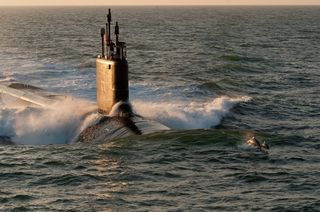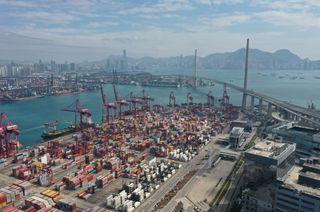The Wall Street Journal
By Bates Gill and Tom Switzer
America, the pundits keep telling us, is failing to exercise leadership in the increasingly volatile Asia–Pacific region. Crippled by debt at home, suffering from foreign-policy fatigue, distracted by crises in Gaza, Ukraine and the Middle East, Washington seems adrift. Meanwhile, a rising China is probing U.S. vulnerabilities and testing American resolve in the region. The Obama "pivot" to Asia, we're told, has pivoted away again.
Someone forgot to tell Australians. In recent years, governments of both Labor and conservative persuasions here have provided enhanced U.S. military access to Australian territory to help make the pivot a reality.
At last week's annual high-level talks in Sydney, the foreign and defense ministers of both nations signed the Force Posture Agreement (FPA). Not only does it provide a legal basis for the presence of U.S. Marines in the northern city of Darwin — currently at 1,150 and set to rise to 2,500 by 2016–17 — it also prepares the way for a rotational presence, and possible home porting, of U.S. Navy vessels and Air Force aircraft in western Australia in the years ahead.
The deal, which was three years in the making, represents an important step in a growing degree of access and presence for U.S. human and material assets on Australian territory over the next 25 years. At this stage, the Marine contingent is primed to respond to humanitarian and disaster-relief missions and partner with other nations to help secure stability in the region. Over time, the FPA could lead to closer cooperation on cutting-edge technology and ballistic missile defense systems.
For the Americans, the 63-year-old alliance is of value because Australia is a stable, reliable and significant presence, positioned in close proximity to the increasingly important Indo-Pacific area. Australia is the 12th largest economy in the world and serves as a fast-expanding and wealthy market for U.S. goods and services.
For the Australians, the alliance means an important security insurance policy as well as favorable access to intelligence and defense technology, including all air force combatants. The deepening strategic relationship with the U.S. testifies to the depth of support for the U.S. alliance in Canberra and among the public broadly. In June, the Lowy Institute's highly regarded annual survey of public opinion and foreign policy found that 78% of Australians think the alliance is important for the nation's security.
This is not surprising. Since the onset of the Cold War, the U.S. alliance has been the centerpiece of Canberra's strategic outlook. Australia is the only nation to have joined America in every major military intervention in the past century: both world wars, Korea, Vietnam, the Gulf War, Afghanistan and Iraq. It has done so for the most part out of conviction as well as calculation.
To be sure, there are uncertainties involved in the process of enhanced military co-ordination. Both sides need to resolve fiscal matters before pursuing future security arrangements.
Australia risks being seen as a "free rider" unless it increases defense spending to the 2% of GDP both the previous and current Australian governments have pledged to achieve. For its part, Washington has slashed defense as deeply as at any time since World War II. Meanwhile, President Barack Obama needs to persuade both congressional Democrats and Republicans to support the Trans-Pacific Partnership after November's mid-term elections.
Another risk is a hotly debated issue down under: how to reconcile Australia's rapidly expanding trade ties with Beijing and its deepening military alliance with Washington. When President Obama and Prime Minister Julia Gillard announced the decision to deploy Marines to Darwin in 2011, China bristled.
So too did a few prominent Australian businessmen. Media proprietor Kerry Stokes said he was "physically repulsed" by Canberra's apparent decision to choose sides between our most important security ally and our most important commercial partner. A recent Lowy poll regards China as "Australia's best friend in Asia" (ahead of Japan), which might explain the cautious progress on the FPA during the past three years. It probably also helps explain the announcement last month that for the first time Australian, U.S. and Chinese soldiers will conduct a joint exercise on Australian soil in October this year.
Intensified U.S.–Australia ties reflect a widespread consensus, from Northeast and Southeast Asia to the Antipodes: U.S. diplomatic and military pre-eminence is welcome. And the Americans are reciprocating. Just last week, the U.S.'s top-ranked military officer, General Martin Dempsey, was the first chairman of the Joint Chiefs of Staff to visit Vietnam in more than 40 years.
U.S. Defense Secretary Chuck Hagel left Asia in no doubt about the level of U.S. commitment to the region when he declared, "We are a Pacific power: we aren't going anywhere." The rebalance continues.
This article as originally published at the The Wall Street Journal





